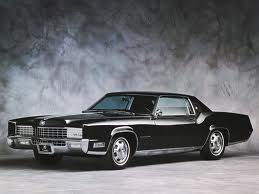Rog on Beauty
After 40 years in business, I’ve decided it’s time to leave the communication stone-age so have set up a website. Not content with doing things by halves, I’ve decided to also enter the mysterious (to me that is) world of blogging.
I’ve been told it’s a cheaper alternative to holding court at various Wellington drinking establishments to share my passion for telling stories and expressing opinions on architecture, planning, design, cars, travel, and related topics. (Not that I have any plans to stop that completely. In fact the name of this blog came to me while enjoying a tasty drop of shiraz at my favourite table at the Tasting Room recently.)
My reference to ‘beauty’ is not a conceit.
Everybody responds to the word. It is fascinating and somewhat elusive.
 What, for instance, is it that makes a dowdy carpark magical by the addition of a layer of snow as seen in Wellington last week?
What, for instance, is it that makes a dowdy carpark magical by the addition of a layer of snow as seen in Wellington last week?
How do we quantify the terms ‘aesthetically pleasing’, ‘well proportioned ‘, or ‘pleasing to the eye’?
Can we design objects, including buildings, to be ‘beautiful’? Can this be a taught subject?
We know for instance that cars, as an example of an object, are much more than mere transportation devices.
When I was growing up in public transport challenged Hamilton, my brother and I loved the brash character of American cars. The Americans ‘styled’ their cars. The era of tailfins, white sidewall tyres, and chrome false teeth, subsequently passed away because the actual car underneath was rubbish.
 Following on the Japanese led a counter revolution of ‘anti-style’, Mechanical reliability was pretty much all that mattered and the bodies were deliberately bland and featureless.
Following on the Japanese led a counter revolution of ‘anti-style’, Mechanical reliability was pretty much all that mattered and the bodies were deliberately bland and featureless.
I was interested to hear a commentator say recently that the Korean car manufacturers , having caught up with the Japanese mastered build quality, reliability and pricing, were now adding ‘design’ as a no-cost extra.
This is not a cynical marketing ploy, as design should be intrinsic. ‘Style’ may just be an add-on, ‘design’ comes from a deeper well. Beautiful designs can also produce profits, because they are more desirable than ugly designs.
In a bigger way of course, buildings have qualities beyond mere shelter. Whilst one person’s beautiful building is another person’s ugly one, no one doubts that the way buildings look really does matter.
Almost the entire fashion industry and a serious slice of the plastic surgery business knows that.
There are people calling themselves ‘beauticians’. Perhaps there should be ‘architectural beauticians’
Publicity about proposed building and infrastructure developments emphasise the logic, the physical need, the construction methodology, and the economics of the project, but generally don’t dare debate whether, at the end of the day, the works will be visually pleasing. It is true that buildings with ‘character’ tend to be more loved than bland ones.
I personally don’t think people are generally become conditioned to ugliness or have lost their enjoyment of beauty, but I do worry that subjective considerations of design results don’t seem to carry the same weight these days as objective ones.
This, I think, is a shame.
Rog
